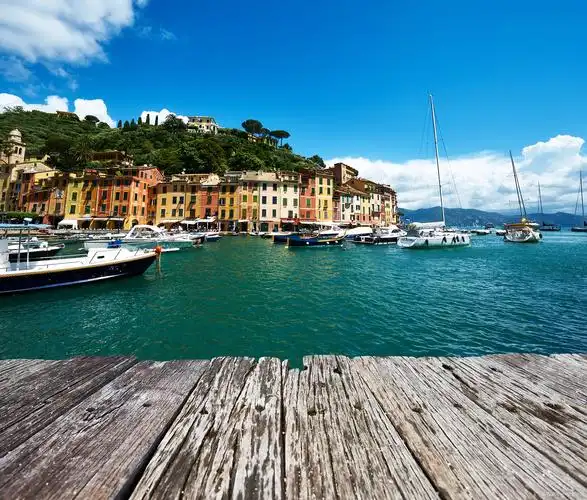Global Travel Information
Bologna, Italy
Bologna, the capital of Italy’s Emilia-Romagna region, is a city that refuses to be reduced to a single label. It is the “Learned” for its ancient university, the “Fat” for its rich cuisine, and the “Red” for its terracotta-hued medieval buildings and leftist political history. Yet, these titles only begin to scratch the surface of a city that is perhaps Italy’s best-kept secret—a place where profound history, intellectual vitality, and culinary excellence converge in a beautifully preserved urban tapestry.
Walking through the historic center, a visitor is immediately struck by the sheer continuity of history. Unlike many Italian cities where modern development has encroached upon the old, Bologna’s core remains remarkably intact, a labyrinth of porticoed streets that have sheltered citizens from rain and sun for centuries. These porticoes, stretching over 62 kilometers in total and now a UNESCO World Heritage site, are more than architectural marvels; they are the city’s living room, a covered network of social and commercial life. They lead you from the grandeur of Piazza Maggiore to hidden corners, artisan workshops, and bustling markets, all under their graceful, timeless arcades.
At the heart of it all lies Piazza Maggiore, the city’s main square. Flanked by some of Bologna’s most significant buildings, the piazza is a stage for daily life. Students lounge on the steps, families gather for evening strolls, and tourists crane their necks to take in the sights. The imposing Basilica of San Petronio, one of the world’s largest churches, dominates the square. Its peculiar unfinished façade, with a lower half of marble and an upper section of raw brick, tells a story of ambition, rivalry, and financial constraints. Inside, the cavernous Gothic interior houses the remarkable “Linea Meridiana” by astronomer Giovanni Cassini, a testament to the city’s scientific prowess.
Adjacent to the basilica stands the Palazzo d'Accursio, the city’s town hall, and the Palazzo del Podestà, whose whispering vaults allow secrets to travel mysteriously from one corner to another. But it is the Two Towers, Asinelli and Garisenda, that truly symbolize Bologna. Leaning precariously since the Middle Ages, these towers were built by rival noble families as displays of power and wealth. Climbing the 498 wooden steps of the Asinelli Tower is a rite of passage, rewarding the effort with a breathtaking panoramic view of a sea of red rooftops, church domes, and the green hills beyond.

This vibrancy is deeply intertwined with the University of Bologna, founded in 1088 and recognized as the oldest continuously operating university in the Western world. The university is not a secluded campus but is woven into the very fabric of the city. Its ancient colleges, vibrant student population, and intellectual energy pulse through the streets. The Archiginnasio, the university’s original seat, is a must-see. Its anatomical theater, a masterpiece of carved wood where public dissections were once performed, speaks volumes about the city’s relentless pursuit of knowledge during the Renaissance.
This scholarly history is inextricably linked to Bologna’s other great passion: food. This is the birthplace of mortadella, tortellini, and the famous Bolognese meat sauce, known internationally as ragù. The city is the undisputed capital of one of the world’s great culinary regions. The Quadrilatero, a compact medieval market district just east of Piazza Maggiore, is a sensory overload. Butchers, cheesemongers, bakers, and fishmongers have traded here for centuries. The air is thick with the aroma of aged Parmigiano-Reggiano, aceto balsamico tradizionale, and freshly baked pasta.
To understand Bologna’s food is to understand its osterie—humble, traditional eateries where the focus is squarely on the quality of the ingredients and the mastery of technique. Here, one doesn’t simply eat; one participates in a ritual. A plate of tagliatelle al ragù, never with spaghetti, is a perfect example of this philosophy—a simple yet profound dish where every element is in harmony. It is a cuisine of generosity and comfort, meant to be shared and savored slowly, much like the pace of life in Bologna itself.
Beyond the food and the famous sites, Bologna possesses a grittier, more rebellious soul—its “Red” identity. It was a stronghold of the Italian Resistance during WWII and later a center for left-wing politics and social movements. This spirit is visible in the political murals adorning walls and the lively, often heated, discussions in its piazzas. It’s a city that is deeply proud, fiercely protective of its traditions, yet always intellectually engaged and forward-thinking.
As evening falls, the porticoes glow with a warm, golden light. The passeggiata (evening stroll) is in full swing, and the chatter from crowded bars and osterie spills onto the streets. There’s a palpable sense of community, of a city utterly at ease with itself. Bologna doesn’t need to shout about its wonders like Venice or Rome. It is confident, authentic, and deeply rewarding for those who take the time to explore its porticoed walkways, engage with its history, and partake in its culinary rituals. It is, in every sense, la grassa, la dotta, la rossa—a city that nourishes the body, the mind, and the soul.
相关文章
- Elbe River Amusement Parks: Rides with River Views
- Elbe River Camping Spots: Pitch a Tent by the Water
- Elbe River Glamping Sites: Luxury Camping Along the Banks
- Elbe River RV Parks: Stay in Your Camper Near the River
- Elbe River B&Bs: Cozy Accommodations with a Personal Touch
- Elbe River Hostels: Budget Stays for Young Travelers
- Elbe River Business Travel Guide: Meetings & Events Near the Water
- Elbe River Conference Venues: Spaces with River Views
- Elbe River Wedding Venues: Tie the Knot by the Water
- Elbe River Funeral Services: Respectful Locations Along the Banks
发表评论
评论列表
- 这篇文章还没有收到评论,赶紧来抢沙发吧~


